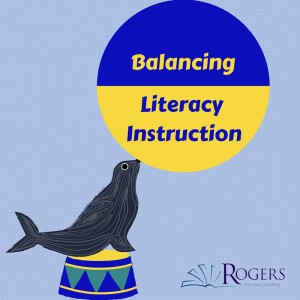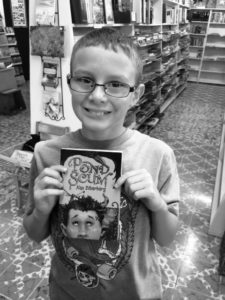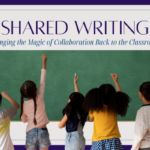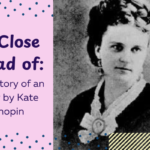 Welcome to Part Three of my series on balancing literacy instruction! Is fiction or nonfiction more important for students? (We’ll save the non-fiction or nonfiction argument for another time…)
Welcome to Part Three of my series on balancing literacy instruction! Is fiction or nonfiction more important for students? (We’ll save the non-fiction or nonfiction argument for another time…)
Just joining us? Make sure you check out the first two posts in this series: Challenging Text VS Instructional Level Text and Explicit Instruction VS Implicit Instruction
Part Three: Fiction VS Nonfiction
If you have spent any time reading either of my blogs, Rogers Education Consulting or Literary Fusions, you know I am obsessed with everything from picture books to graphic novels, young adult (YA) literature to engaging informational text. I get excited over small nuances in texts and am delighted by new releases from my favorite authors.
Regardless of my excitement for all things book-related, it seems as though there is always an argument when it comes to choosing texts to use in instruction. Complex text or instructional level? Classics or new releases? Fiction or nonfiction? Over the past two years, with the release of new standards and expectations for student success, there has been a definite push towards nonfiction text and a decline in fiction text. I completely understand the importance of nonfiction reading in grade school and agree that it should be prominent in instruction. After all, reading informational text  will be required in college and work. Those who choose to attend university will need to be skillful readers of nonfiction texts, as well as skillful writers of information. Students who choose a career will also need to be able to skim and learn from reading informational text. I am not denying the importance of this skill or emphasis, but I am concerned with the flight from fiction.
will be required in college and work. Those who choose to attend university will need to be skillful readers of nonfiction texts, as well as skillful writers of information. Students who choose a career will also need to be able to skim and learn from reading informational text. I am not denying the importance of this skill or emphasis, but I am concerned with the flight from fiction.
I realize that not every student will enjoy curling up in a comfy chair and engaging in a make-believe world with lifelike characters and situations, but I feel that every student should engage in fiction reading. When students immerse themselves with well-developed characters and situations, it’s almost as if they have had these experiences themselves. They can add these fictional experiences to their own experiences in order to create a richer bank of background knowledge from which to pull and make connections. They become attached to and able to understand different types of people. Personally, I can connect the people in my real life with people I have read about, and it helps me understand them a little bit better. In fact, Vartan (2015) explains how various studies have shown that people who read fiction have better brain connectivity, empathy, and theory of mind!
As conscientious teachers, we all want our students to achieve in these areas, so we must be careful to balance nonfiction and fiction in the classroom. Both have a place in the classroom and are needed to help make our students not only successful at a university, but also in their social interactions for the rest of their lives.
What is your favorite fiction text to teach?


